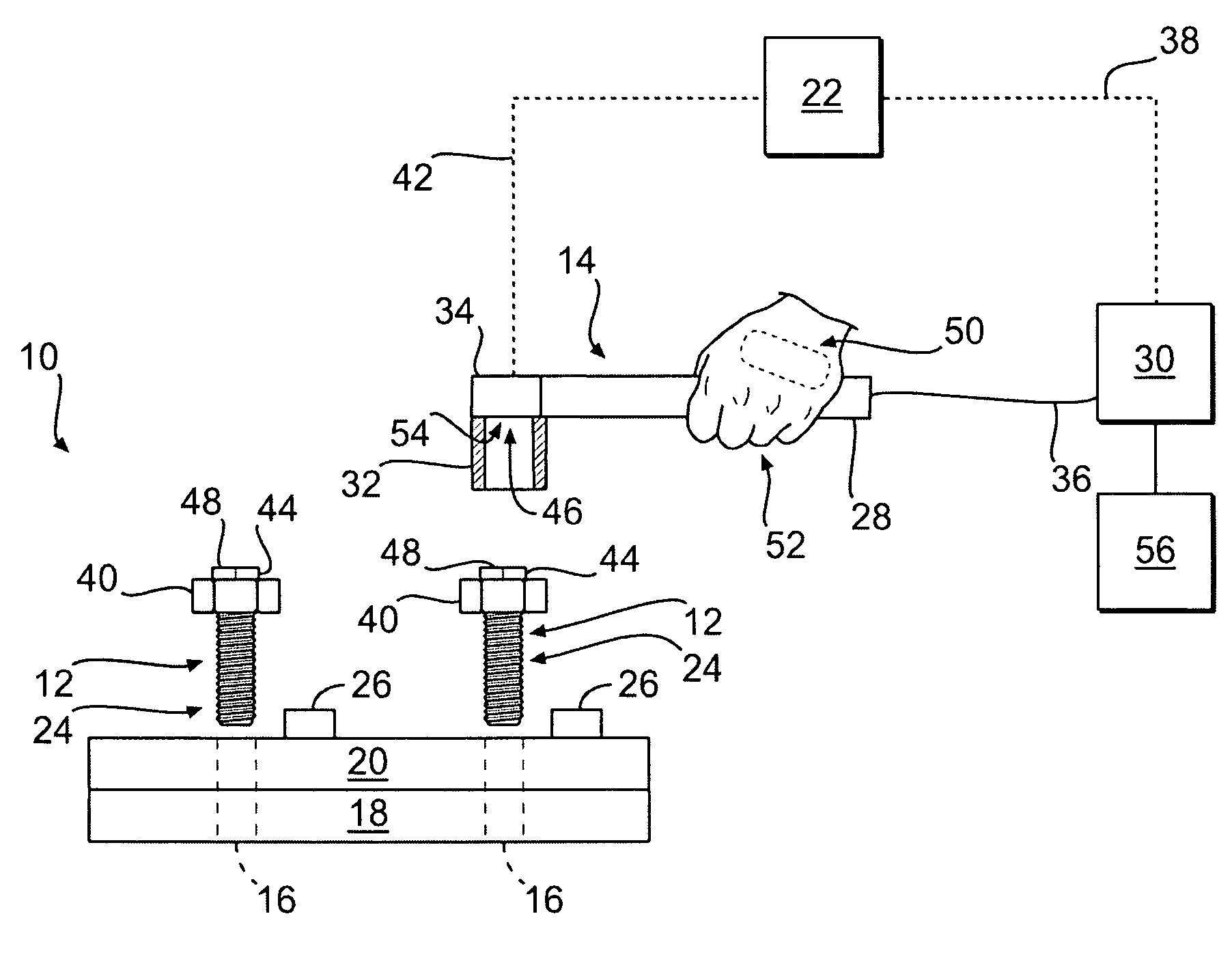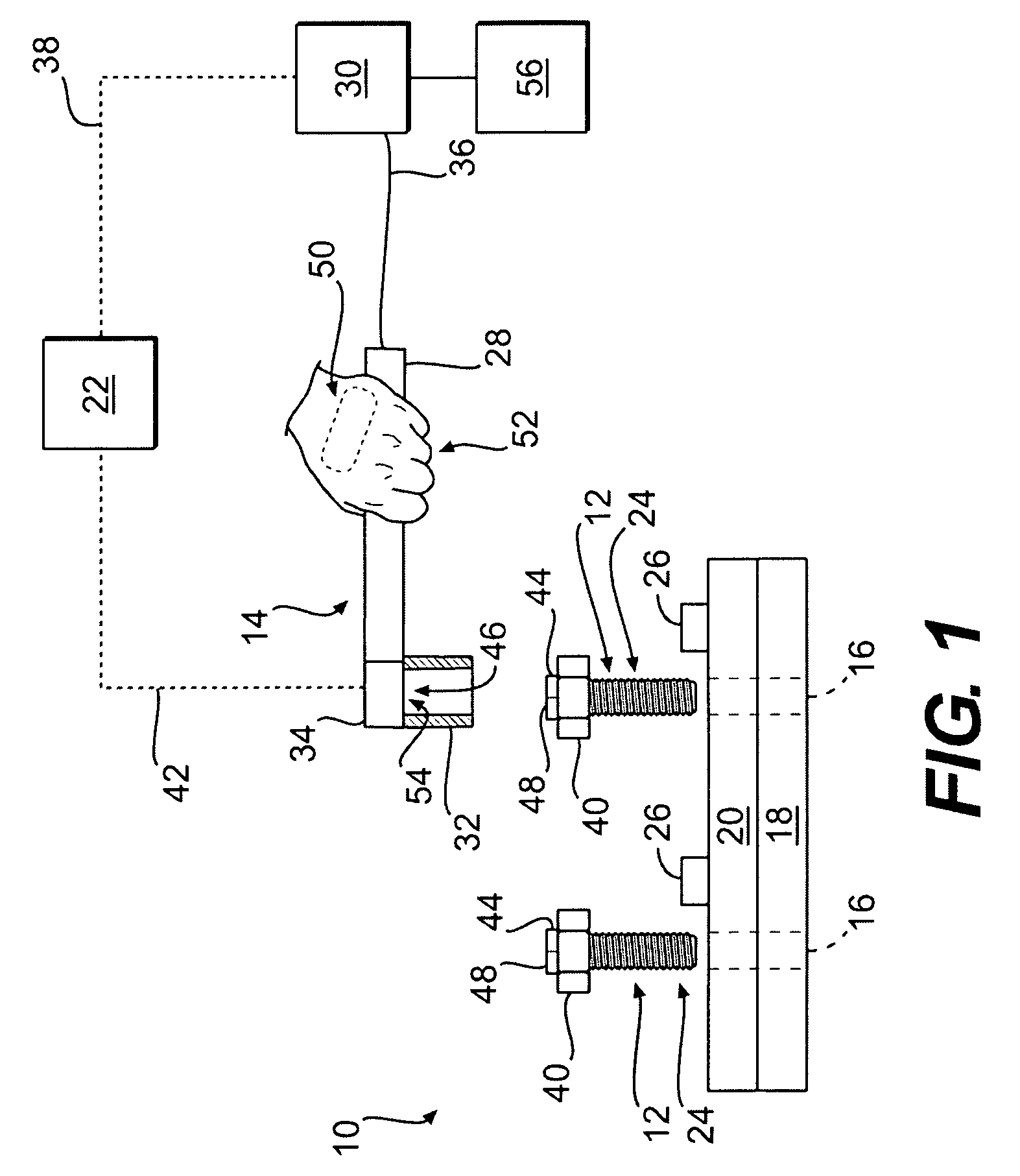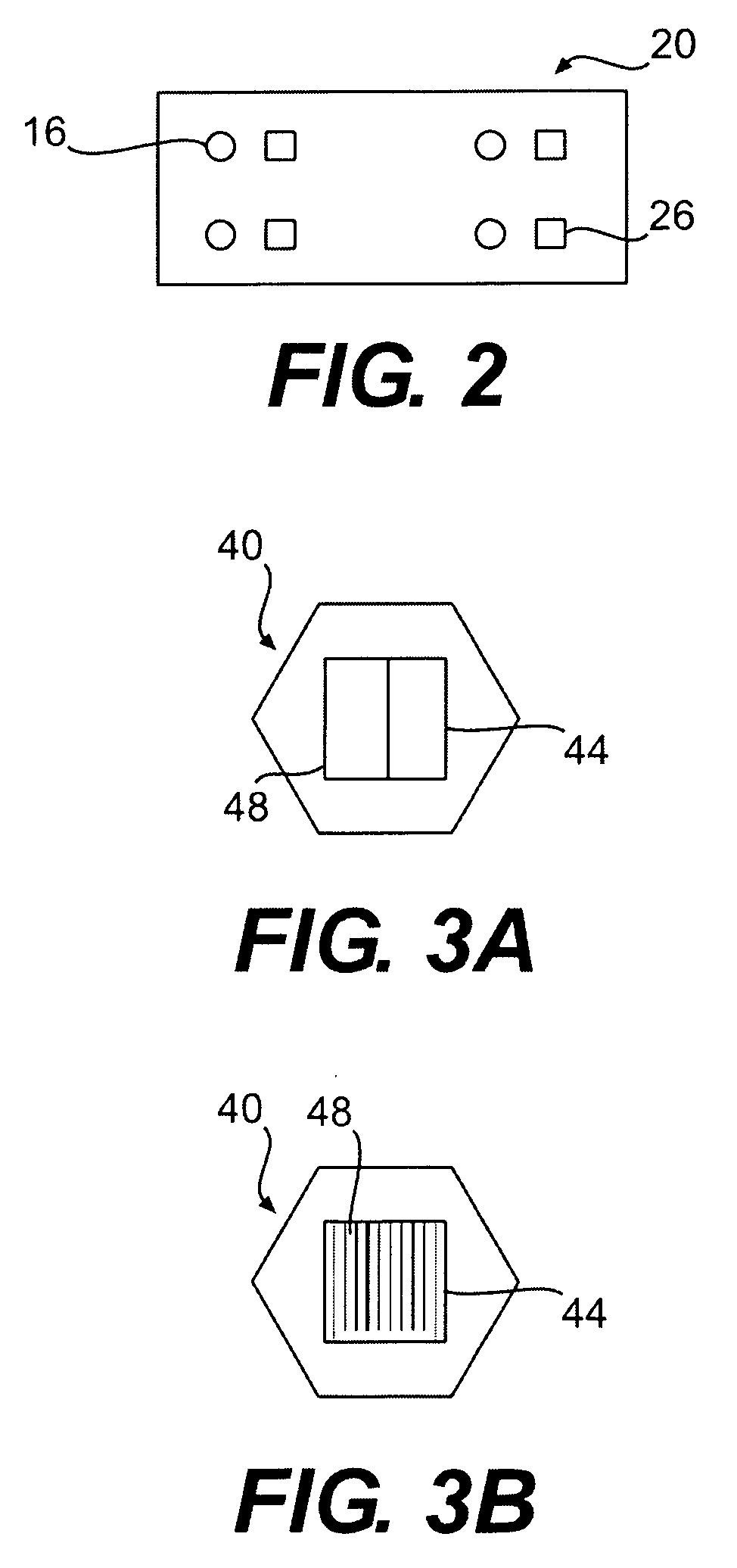Fastener tightening system utilizing identification technology
a technology of identification technology and fastener, applied in the direction of force/torque/work measurement apparatus, instruments, manufacturing tools, etc., can solve the problems of reducing the axial load of the first, affecting the compressive force applied to the joint by another already tightening fastener, and reducing the strength of the join
- Summary
- Abstract
- Description
- Claims
- Application Information
AI Technical Summary
Problems solved by technology
Method used
Image
Examples
Embodiment Construction
[0018]FIG. 1 provides a diagrammatic perspective of a component assembly station 10 according to an exemplary embodiment. Component assembly station 10 may be used to secure individual components together to create a finished product via one or more mechanical fasteners 12. Such finished products may include, for example, engine assemblies, engine exhaust assemblies, construction equipment, or any other finished product known in the art requiring threaded fasteners to secure individual components together. Mechanical fasteners 12 may be, for example, screws, bolts, threaded studs or lugs, or any other mechanical fastener known in the art. Component assembly station 10 may include a tightening tool 14 for tightening fasteners 12 into mating holes 16 of first and second components 18, 20, and a controller 22 for regulating the operation of tightening tool 14. It should be understood that although the exemplary embodiment illustrated in FIG. 1 discloses two components to be assembled, ...
PUM
 Login to View More
Login to View More Abstract
Description
Claims
Application Information
 Login to View More
Login to View More - R&D
- Intellectual Property
- Life Sciences
- Materials
- Tech Scout
- Unparalleled Data Quality
- Higher Quality Content
- 60% Fewer Hallucinations
Browse by: Latest US Patents, China's latest patents, Technical Efficacy Thesaurus, Application Domain, Technology Topic, Popular Technical Reports.
© 2025 PatSnap. All rights reserved.Legal|Privacy policy|Modern Slavery Act Transparency Statement|Sitemap|About US| Contact US: help@patsnap.com



